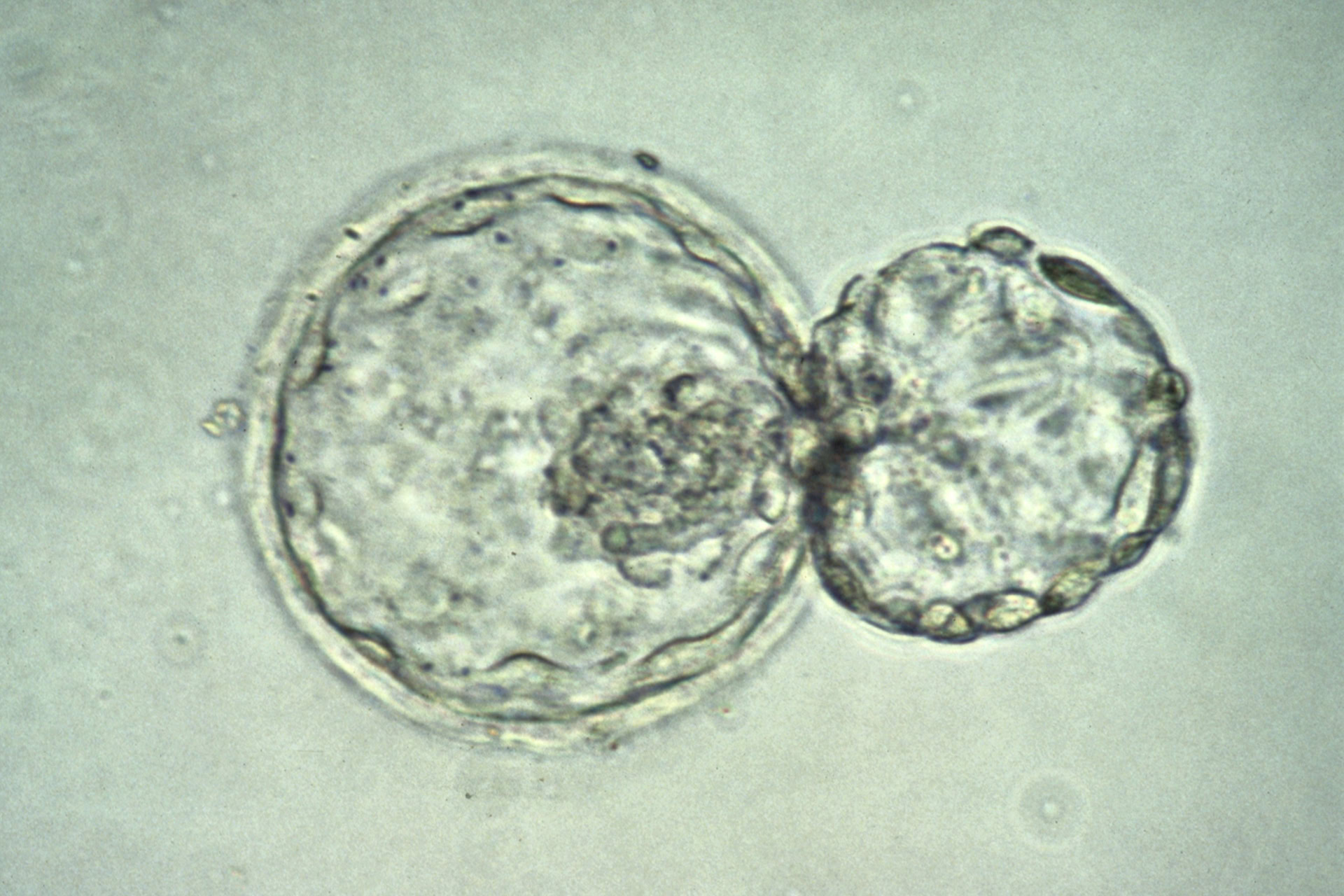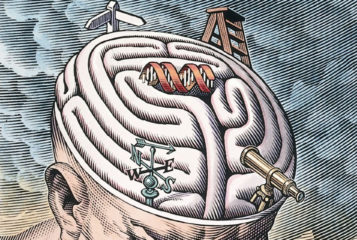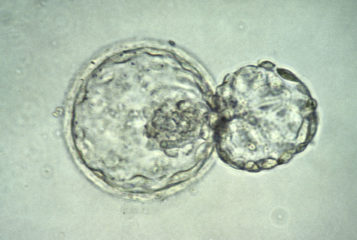Recent advances have demonstrated the feasibility of culturing human embryos in vitro for 14 days. Concurrently, novel technological breakthroughs such as the creation of human stem-cell-based embryo-like structures (ELS) have surfaced. ELS is an alternative term for stem-cell-based embryo models (SCBEMs) (see BioNews 1195, 1196 and 1206). These developments have prompted calls for a reevaluation of the internationally well-known '14-day rule' which posits that embryos cannot be cultured in vitro for longer than 14 days' post-fertilisation and/or until the emergence of the primitive streak.
The 14-day rule has been adopted in various countries' laws, including the Netherlands. The Dutch Embryo Act was established in 2002 and has remained unchanged since despite earlier evaluations in 2006 and 2012 by a guidance committee installed by science funder ZonMW. Considering the evolving science, however, the third evaluation of the Act in 2021 questioned specific aspects of its framework, including the explicit prohibition of cultivating embryos beyond 14 days. In response, the Dutch Minister of Health, Welfare, and Sport tasked the Health Council with a reconsideration of the 14-day rule in the Embryo Act.
In October 2023, the Council released a report recommending an extension of the 14-day rule to a 28-day rule (see BioNews 1214). The recommendation is grounded in the consideration of three key factors: the embryo's worthiness of protection, the potential benefits of research beyond the 14-day limit, and the societal perspective.
The proposed 28-day rule is suggested to apply not only to 'classic embryos', surplus IVF embryos derived from sperm-egg fertilisation, but also to 'non-conventional embryos', integrated ELS that 'contain the relevant embryonic and extraembryonic structures to represent the integrated development of an entire embryo'. As it cannot currently be ruled out that non-conventional embryos have the potential to grow into a human being, the Council asserts that classic and non-conventional embryos should both be similarly protected under the Act. However, acknowledging that ELS may deviate from 'canonical embryonic development', meaning they may not necessarily follow the same developmental steps and time course as classic embryos, the Council specifies that non-conventional embryos can be developed for 28 days or to 'the corresponding developmental stage'. The Council elaborates that 'scientists should, in practice, identify the corresponding developmental age of the structure concerned upon its creation. This developmental age should then be subtracted from the 28 days'.
This report is an important step in navigating novel scientific developments and providing a practical and concrete formulation of an alternative policy to the 14-day rule. As the report outlines, obtaining insight into the so-called 'black box' period between 14 and 28 days of culture can yield fundamental knowledge about human development and improved understanding of disease prevention and the safety and effectiveness of fertility treatments. Moreover, the report provides a proposal to navigate the incongruence of the 14-day rule in the context of ELS. As previously outlined, this incongruence results from the fact that ELS lack a 'day zero' from which to start counting and do not necessarily follow the conventional, sequential stages of embryogenesis.
Concurrently, the report raises important and difficult questions regarding the balancing of policy, practice, and the public perspective. First, the advice appropriately addresses the context of a pluralistic society, acknowledging multiple 'reasonable' views on how to deal with embryos. The report also asserts that the societal perspective is a crucial factor in proposing the 28-day rule. Moreover, it emphasizes that public support for embryo research could enhance the 'moral legitimacy' of political decisions like extending the 14-day rule. In our view, there is a need for more reflection on such claims and their justification, and for a critical examination of how to measure and integrate societal perspectives into policy. What does it mean to take into account the societal perspective in political decisions about the 14-day rule, and when would views classify as (un)reasonable?
As the report also acknowledges, there is very limited recent (Dutch or global) research on public perspectives on embryo research and – particularly – ELS research. The report does mention a 2020 study, revealing that 34 percent of respondents found extending the limit to 28 days acceptable, whereas 46 percent did not and 20 percent reported they did not know. Nonetheless, the report does not elaborate on whether and if so, how such data should be factored into decision-making.
A recent systematic review on the ethics of embryo models also highlights the lack of clarity in many publications in defining and justifying the need for public engagement, and how this engagement should affect policymaking. These unresolved questions concerning the role of societal perspectives in policymaking are highly relevant to both the new Dutch report, in which the societal perspective is considered a key pillar, and policy decisions about new and emerging technologies in general.
Second, the report concludes that 'integrated ELS are in fact proper embryos ('non-conventional ones') and, as such, morally equivalent to classic embryos'. In its substantiation, the report presents a comprehensive and relevant overview of various grounds for moral status, acknowledging that this status encompasses not only intrinsic value but also relational and symbolic value. According to the report, relational value refers to the value that society derives from their biological or social relationship with human embryos, while symbolic value refers to the value they have based on what society considers meaningful, such as the beginning of life. Despite acknowledging the absence of data on public perspectives on this matter, the committee asserts that in their view the 'relational and symbolic value of non-conventional embryos is approximately the same as that accorded to classic embryos'.
However, ontologically, the statement that integrated ELS are proper embryos could be questioned: does this hold for any ELS with both embryonic and extraembryonic tissues, or is that only the case at a certain level of integration, and if so, which level? Similarly, questions could be asked whether classic embryos and integrated ELS are necessarily morally equivalent. In contrast to the reports' conclusion, for example, we consider it plausible that the relational value attributed to integrated ELS – cultured in a lab without the intention of transfer to a human womb – would be deemed lower than that of classic embryos. Classic embryos are generally associated with the establishment of pregnancies, maybe even in people we know, which is likely to affect the relational value attributed to them. It would be highly interesting to conduct further research to investigate and unravel these issues.
Finally, applying the 28-day rule to non-conventional embryos may pose practical challenges. To start, assessing the 'integratedness' of an ELS beyond 14 days may present difficulties due to the limited existing knowledge about classic embryos beyond this stage. Determining the integration level of an ELS could involve comparisons of gene expression through, for instance, spatial transcriptomics and/or (single-cell) RNA sequencing. Given the scarcity of abortion material in the first weeks after conception, the 14-day rule, and the challenges that may initially arise with culturing embryos beyond 14 days if and when the rule is changed, such information is – at least in the foreseeable future – mostly unavailable for classic embryos beyond 14 days.
In the meantime, comparisons with other species, such as non-human primates or mice, could be made, but substantial interspecies differences are to be expected. More fundamentally, identifying the corresponding developmental age of a non-conventional embryo may be uncertain as it cannot be assumed that the developmental speed of classic and non-conventional embryos is the same: non-conventional embryo development may progress faster or slower than that of classic embryos. While more knowledge about the influence of culture conditions on ELS' developmental speed may eventually provide more insights into the comparability of the development of classic and non-conventional embryos, this issue poses practical challenges when it comes to determining at what points experiments with integrated ELS should cease.
While incorporating the Health Council report's recommendations into Dutch law would still require a separate process that has not been initiated yet, the report represents a significant stride towards crafting an alternative policy to the 14-day rule. At the same time, it also raises important questions about how societal perspectives should effectively shape policy, and about the ontological and moral equivalence of classic embryos and integrated ELS. Moreover, we advocate for a constructive dialogue with scientists and policymakers involved in working with ELS to further reflect on the practical implications of the proposed rule.
Acknowledgements
We would like to thank Megan Munsie for her feedback on a previous draft of this article, and Susanne van den Brink and Alfonso Martinez Arias for their helpful input on comparisons between classic embryos and integrated ELS and the practical challenges related to applying the 28-day rule to integrated ELS.
This article is published under a Creative Commons BY 4.0 licence.






Leave a Reply
You must be logged in to post a comment.